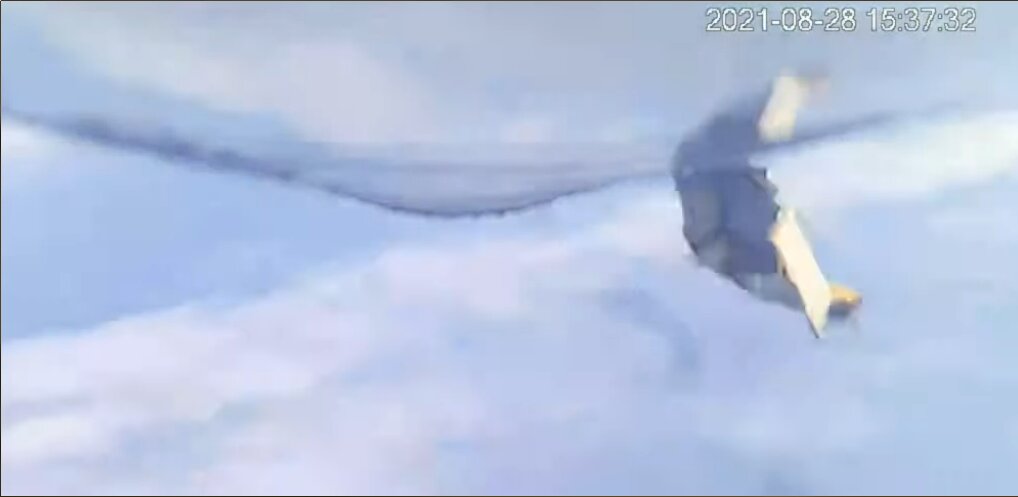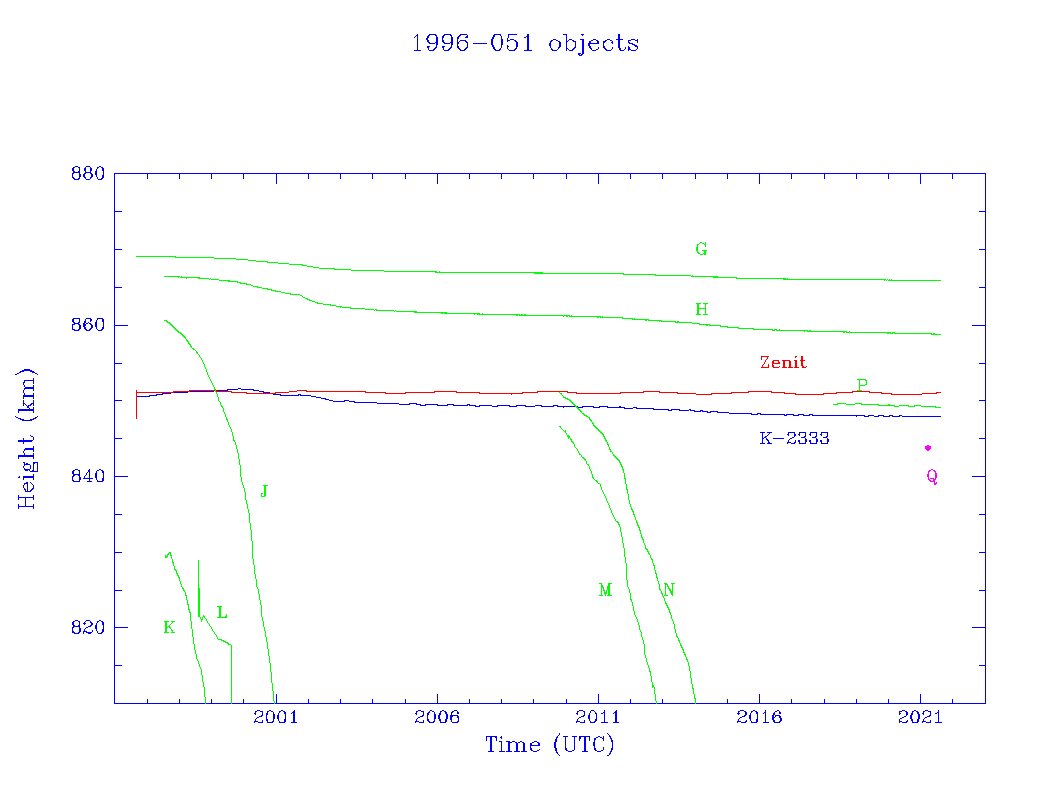
Space-Track catalog updated today with a note for object 48078, 1996-051Q: "Collided with satellite".
This is a new kind of comment entry - haven't seen such a comment for any other satellites before. Let's look a bit closer:
This is a new kind of comment entry - haven't seen such a comment for any other satellites before. Let's look a bit closer:
48078 is a small debris object from the Zenit-2 rocket that launched a Tselina-2 electronic spy sat in Sep 1996. Between 1997 and 2021, 8 debris objects were tracked from the rocket. This one, added to the catalog in Mar 2021, has only a single element set, epoch 2021 Mar 16
I conclude that they probably only spotted in tin the data after it collided with something and that's why there's only one set of orbital data. So the collision probably happened shortly after the epoch of the orbit. What did it hit?
The obvious candidate is Yunhai-1-02, which broke up on Mar 18 for unknown reasons. So it will be interesting to compare the orbits of the objects around then
And indeed, a quick analysis of the TLEs show that Yunhai 1-02 (44547) and debris object 1996-051Q (48078) passed within 1 km of each other (so within the uncertainty of the TLEs) at 0741 UTC Mar 18, exactly when 18SPCS reports Yunhai broke up.
37 debris objects (green) have been cataloged so far from the breakup - there are likely to be more. This looks to be the first major confirmed orbital collision in a decade. 

Nevertheless it appears that the Yunhai satellite is still under control and able to make orbit adjustments (blue dots) so the collision was not catastrophic? 

Also, @coastal8049 Scott Tilley continued to pick up radio signals from the sat in May
https://twitter.com/coastal8049/status/1398115164847677440
• • •
Missing some Tweet in this thread? You can try to
force a refresh
















